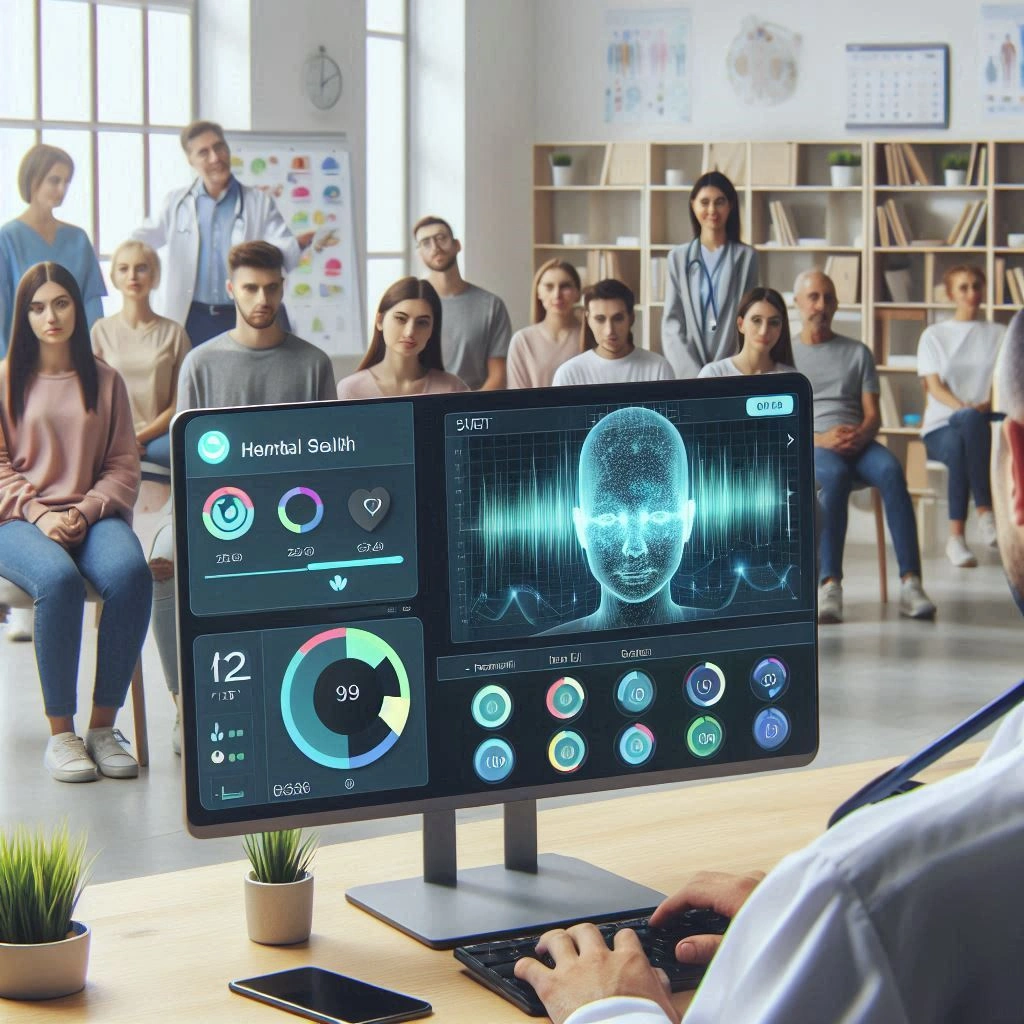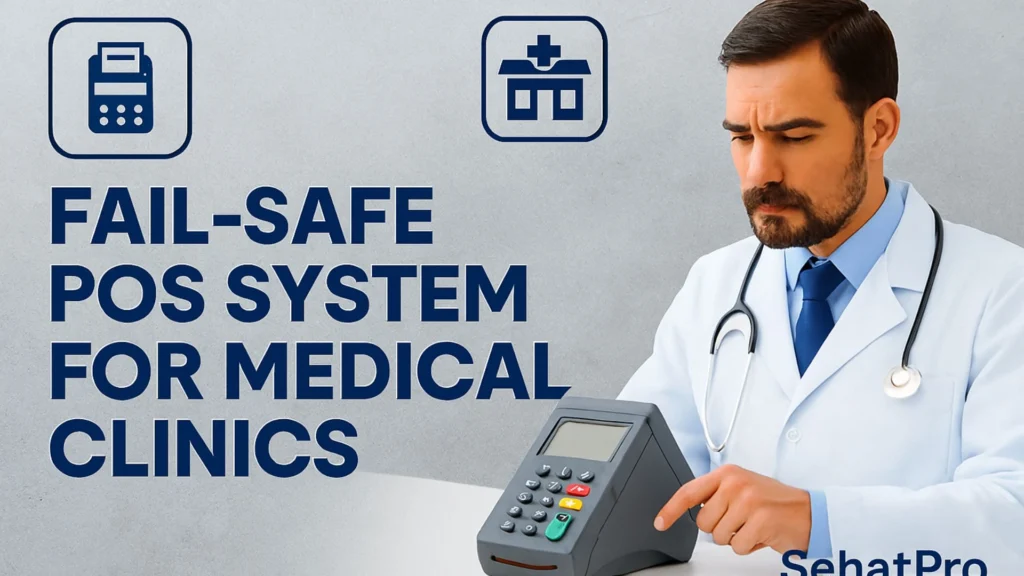Are You Still Using Paper Records to Manage Your Clinic?
In today’s digital age, the healthcare industry is undergoing a significant transformation. Many clinics still rely on paper records to manage patient information, but this outdated method is becoming increasingly inefficient and prone to errors. As the demand for more streamlined, accurate, and secure healthcare services grows, clinics must embrace the benefits of a digital patient records system.
In this blog, we’ll explore the top five reasons why clinics need to switch to a digital patient records system and how this technological shift can help improve patient care, reduce costs, and enhance operational efficiency.
What is a Digital Patient Records System?
A digital patient records system (also known as an Electronic Health Record or EHR system) is a software solution designed to store, manage, and retrieve patient information in digital format. Unlike traditional paper-based records, a digital system allows healthcare providers to access patient data in real-time, update records instantly, and share information securely.
EHR systems include a wide range of features, from basic contact details to more complex health data, such as test results, medical histories, diagnoses, treatment plans, and prescriptions. These systems are essential for modern healthcare practices, enabling efficient, error-free management of patient data.
1. Improved Patient Care and Safety
How can a digital patient records system improve patient care and safety?
Patient safety is paramount in healthcare. Paper-based records are vulnerable to misplacement, human error, and illegibility, all of which can compromise patient care. With a digital patient records system, healthcare providers can access accurate, up-to-date patient data at the click of a button, leading to better-informed decisions and safer treatments.
Here’s how a digital system contributes to better care and safety:
- Real-Time Access to Patient Information: Healthcare providers can access patient data in real-time, regardless of their location. This ensures that the most recent information is always available during consultations, improving diagnosis accuracy and treatment planning.
- Fewer Errors: Manual data entry and paper records increase the risk of errors, such as missed appointments or incorrect medication prescriptions. Digital systems eliminate these risks by providing automated tools that ensure accuracy and consistency across all records.
- Better Coordination of Care: Digital patient records can be easily shared with specialists, enabling more coordinated and collaborative care. Whether a patient needs a referral or a second opinion, their full medical history is immediately available to all parties involved.
- Clinical Decision Support: Many EHR systems include clinical decision support tools that flag potential issues such as drug interactions, allergies, or contraindications. This reduces the chances of medication errors and improves patient safety.
2. Enhanced Efficiency and Productivity
How does a digital patient records system improve clinic efficiency?
In a fast-paced clinical environment, time is of the essence. Traditional paper records require significant administrative time for tasks like filing, retrieving, and updating patient information. A digital patient records system automates these processes, allowing healthcare providers to spend more time focusing on patient care rather than administrative duties.
Here’s how a digital system boosts productivity:
- Faster Access to Patient Data: Searching through piles of paper files takes valuable time. With digital records, all patient information is stored in a centralized database that’s accessible within seconds, streamlining workflows and improving efficiency.
- Automated Updates: When a patient’s information changes, a digital system ensures that updates are instantly reflected across all records, reducing the chances of outdated or inconsistent information.
- Eliminating Paperwork: Paper records require filing, storing, and retrieving, all of which are time-consuming and space-intensive. Digital systems eliminate these tasks, freeing up time and resources that can be better spent on patient care.
- Integrated Features: Digital patient records systems often come with built-in features such as appointment scheduling, billing, and prescription management, reducing the need for separate systems and making clinic operations more streamlined.
3. Improved Data Security and Compliance
How does a digital patient records system improve data security and help with compliance?
One of the biggest challenges healthcare providers face is protecting patient information from unauthorized access or data breaches. Digital patient records systems provide robust security features that protect sensitive data and ensure that clinics comply with healthcare regulations.
Here’s how a digital system enhances security and compliance:
- Advanced Encryption: Digital records are encrypted, ensuring that sensitive patient data is protected from unauthorized access. Only authorized personnel can view or modify patient records, minimizing the risk of data breaches.
- Access Control and Audit Trails: A digital system allows clinics to implement role-based access control, meaning only individuals with specific permissions can access certain information. Additionally, audit trails track who accessed or modified patient records, ensuring accountability.
- Compliance with Regulations: Many countries require healthcare providers to comply with regulations such as HIPAA (Health Insurance Portability and Accountability Act) in the United States or the General Data Protection Regulation (GDPR) in the European Union. Digital systems are designed to meet these regulatory requirements by ensuring secure data storage, access control, and reporting.
- Data Backups: Unlike paper records, which can be lost or damaged, digital systems automatically back up data to secure cloud storage, ensuring that patient information is safe even in the event of a system failure or natural disaster.
4. Better Patient Engagement and Experience
How does a digital patient records system improve patient engagement and experience?
Patient engagement is a key factor in achieving better healthcare outcomes. A digital patient records system enhances the patient experience by making it easier for patients to access their health information and communicate with their healthcare providers.
Here’s how digital systems foster better patient engagement:
- Patient Portals: Many EHR systems offer secure patient portals, where patients can access their medical records, review test results, and communicate with their healthcare provider. This self-service feature empowers patients to take charge of their health and engage more actively in their treatment.
- Appointment Scheduling and Reminders: Digital systems make it easier for patients to book, reschedule, or cancel appointments online. Automated reminders ensure patients are more likely to attend their scheduled visits, reducing no-show rates and improving care continuity.
- Telemedicine Integration: Some digital patient records systems integrate with telemedicine platforms, allowing patients to have virtual consultations with their healthcare providers. This is especially useful for patients in rural areas or those who have difficulty accessing in-person care.
- Improved Communication: With digital systems, patients and healthcare providers can communicate more easily. Whether through secure messaging or virtual visits, patients can ask questions, get advice, and follow up on treatments without needing to schedule an in-person appointment.
5. Cost Savings and Financial Benefits
How does a digital patient records system reduce costs for clinics?
Adopting a digital patient records system may seem like an investment upfront, but the long-term savings far outweigh the initial costs. Digital systems not only help improve patient care but also lead to significant cost savings by streamlining operations, reducing paperwork, and minimizing errors.
Here’s how digital systems contribute to financial savings:
- Reduced Administrative Costs: A digital system eliminates the need for paper records, physical storage, and time spent on manual data entry. This reduces overhead costs and administrative workloads, freeing up staff to focus on patient care.
- Fewer Errors and Legal Risks: Medical errors due to incorrect or incomplete records can result in costly malpractice lawsuits. By reducing the risk of errors, a digital system can help avoid legal complications and associated costs.
- Improved Billing and Reimbursement: A digital patient records system integrates with billing systems, ensuring accurate coding and billing for services rendered. This reduces the risk of claim denials and delays, leading to faster reimbursement and better financial stability for the clinic.
- Efficiency Gains: By automating tasks like appointment scheduling, prescription management, and patient tracking, digital systems reduce the time spent on administrative work, allowing clinics to see more patients and increase revenue.
Conclusion: Why Your Clinic Needs a Digital Patient Records System
A digital patient records system is no longer a luxury—it’s a necessity. Whether you’re looking to improve patient care, increase operational efficiency, or ensure compliance with healthcare regulations, digital systems provide the tools necessary to take your clinic to the next level. By adopting a digital system, you can enhance the patient experience, reduce errors, improve communication, and achieve significant cost savings.
As the healthcare industry continues to evolve, embracing technology like digital patient records systems will help your clinic stay ahead of the curve and provide better, more efficient care for your patients.
FAQs
1. What is a digital patient records system?
A digital patient records system, also known as an Electronic Health Record (EHR) system, is a software solution that stores, manages, and retrieves patient information digitally, replacing traditional paper-based records.
2. How does a digital patient records system improve patient care?
A digital system provides real-time access to accurate patient data, reduces errors, and improves communication between healthcare providers, resulting in better decision-making and more personalized care.
3. Can a digital patient records system help clinics save money?
Yes, by reducing administrative costs, improving billing accuracy, minimizing errors, and increasing operational efficiency, a digital system can lead to significant cost savings for clinics.
4. Is a digital patient records system secure?
Yes, digital systems use advanced encryption, access control, and backup features to ensure patient data is securely stored and complies with healthcare regulations like HIPAA.
5. How can a digital system enhance patient engagement?
Digital systems offer features like patient portals, appointment scheduling, telemedicine, and secure messaging, which empower patients to take an active role in their healthcare and improve communication with their providers.



